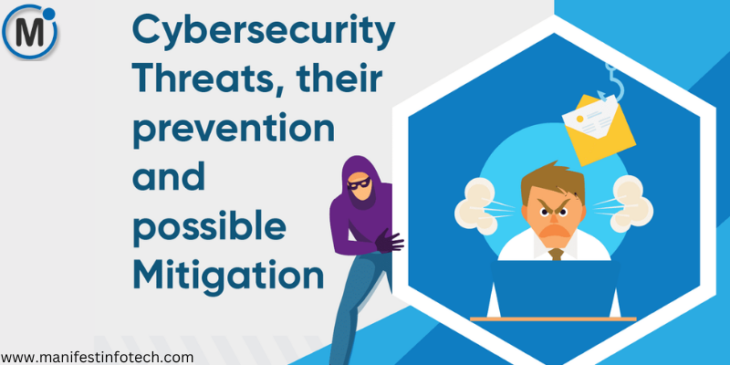
With the rapid advancement of technology, cybersecurity threats are becoming more sophisticated and prevalent. Businesses, governments, and individuals are all at risk of cyberattacks that can compromise sensitive data, financial assets, and personal privacy. Understanding these threats and how to prevent them is crucial in today’s digital world.
Top Cybersecurity Threats in 2024
1. Phishing Attacks
Phishing remains one of the most common and dangerous cybersecurity threats. Cybercriminals trick users into revealing sensitive information such as passwords, credit card details, or login credentials by posing as legitimate entities via emails, messages, or fake websites.
Prevention Tips:
Always verify the sender’s email address before clicking on links.
Avoid downloading attachments from unknown sources.
Use email filtering tools to block suspicious emails.
Enable multi-factor authentication (MFA) for accounts.
2. Ransomware Attacks
Ransomware is a type of malware that encrypts a victim’s data and demands a ransom for its release. These attacks target individuals, businesses, and even government organizations.
Prevention Tips:
Regularly back up important files to an offline or cloud storage.
Keep software and operating systems up to date.
Avoid downloading software from untrusted sources.
Use strong endpoint protection and anti-ransomware tools.
3. AI-Powered Cyber Threats
With advancements in artificial intelligence, cybercriminals are now using AI to automate attacks, bypass security measures, and create deepfake scams. AI-driven cyber threats can be highly deceptive and difficult to detect.
Prevention Tips:
Implement AI-driven security solutions to detect and mitigate threats.
Educate employees and users about AI-generated phishing and deepfake scams.
Use identity verification measures for critical transactions.
4. Internet of Things (IoT) Vulnerabilities
The increasing use of smart devices has created new attack surfaces for hackers. Many IoT devices lack strong security protocols, making them easy targets for cybercriminals.
Prevention Tips:
Change default passwords on IoT devices.
Keep IoT firmware and software updated.
Use a secure network for IoT connections.
Disable unnecessary features and access points.
5. Supply Chain Attacks
Hackers target software providers and third-party vendors to infiltrate their clients’ systems. These attacks can spread malware through legitimate software updates or compromised vendor systems.
Prevention Tips:
Conduct security assessments on third-party vendors.
Monitor software updates for suspicious activity.
Implement zero-trust security principles.
Use endpoint detection and response (EDR) solutions.
Best Practices for Cybersecurity Protection
Use Strong Passwords: Implement complex passwords and change them regularly.
Enable Multi-Factor Authentication (MFA): Adds an extra layer of security to prevent unauthorized access.
Keep Systems Updated: Regularly update operating systems, applications, and antivirus software.
Educate Employees and Users: Cybersecurity awareness training helps prevent human errors that lead to security breaches.
Monitor Network Activity: Use intrusion detection systems to identify unusual activity.
Secure Backups: Ensure critical data is backed up securely and regularly tested for restoration.
Conclusion
Cybersecurity threats are evolving, and staying informed is the key to protection. By adopting proactive security measures and educating users, businesses and individuals can minimize risks and safeguard their data from cybercriminals. As technology advances, so should our commitment to cybersecurity.
If you are looking for any services related to Website Development, App Development, Digital Marketing and SEO, just email us at nchouksey@manifestinfotech.com or Skype id: live:76bad32bff24d30d
𝐅𝐨𝐥𝐥𝐨𝐰 𝐔𝐬:
𝐋𝐢𝐧𝐤𝐞𝐝𝐢𝐧: linkedin.com/company/manifestinfotech
𝐅𝐚𝐜𝐞𝐛𝐨𝐨𝐤: facebook.com/manifestinfotech/
𝐈𝐧𝐬𝐭𝐚𝐠𝐫𝐚𝐦: instagram.com/manifestinfotech/
𝐓𝐰𝐢𝐭𝐭𝐞𝐫: twitter.com/Manifest_info
#CyberSecurity #OnlineSafety #DataProtection #Phishing #Ransomware #AIThreats #IoTSecurity #StaySafeOnline